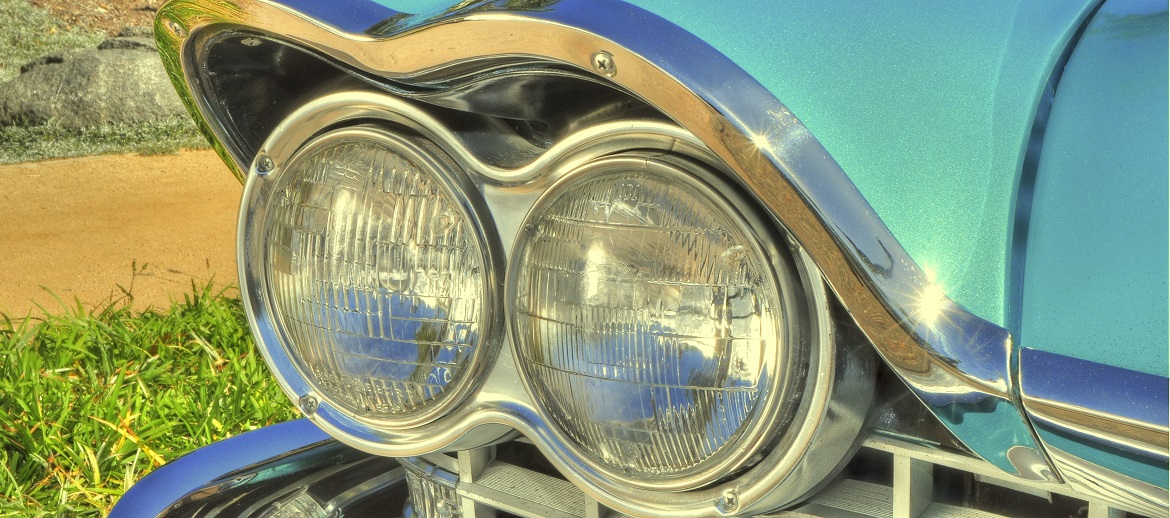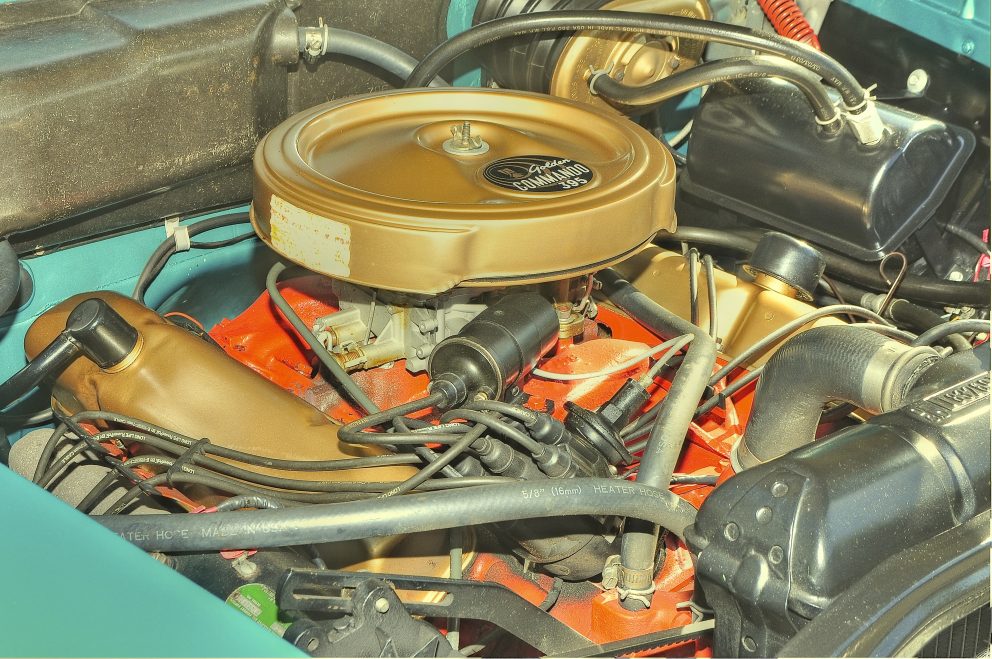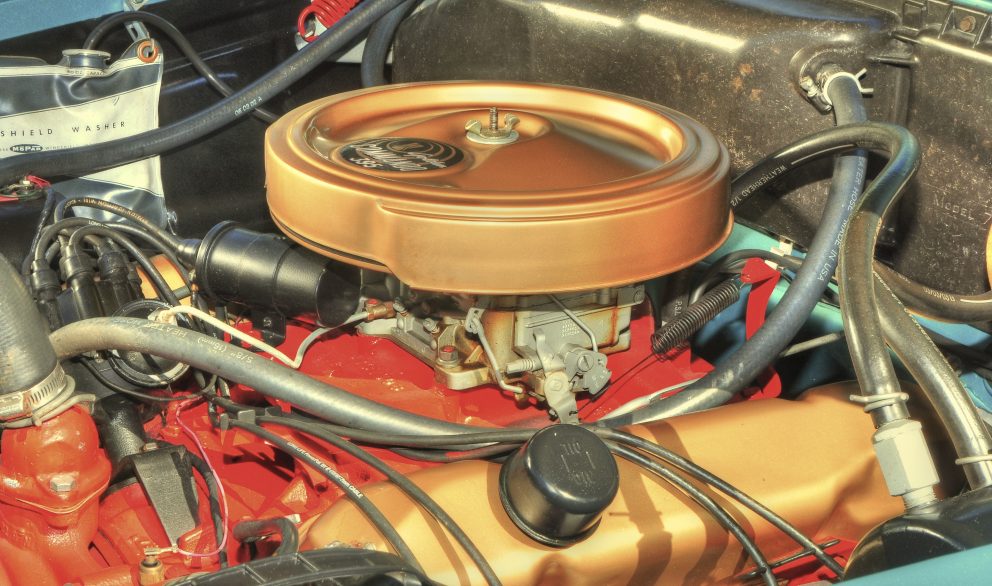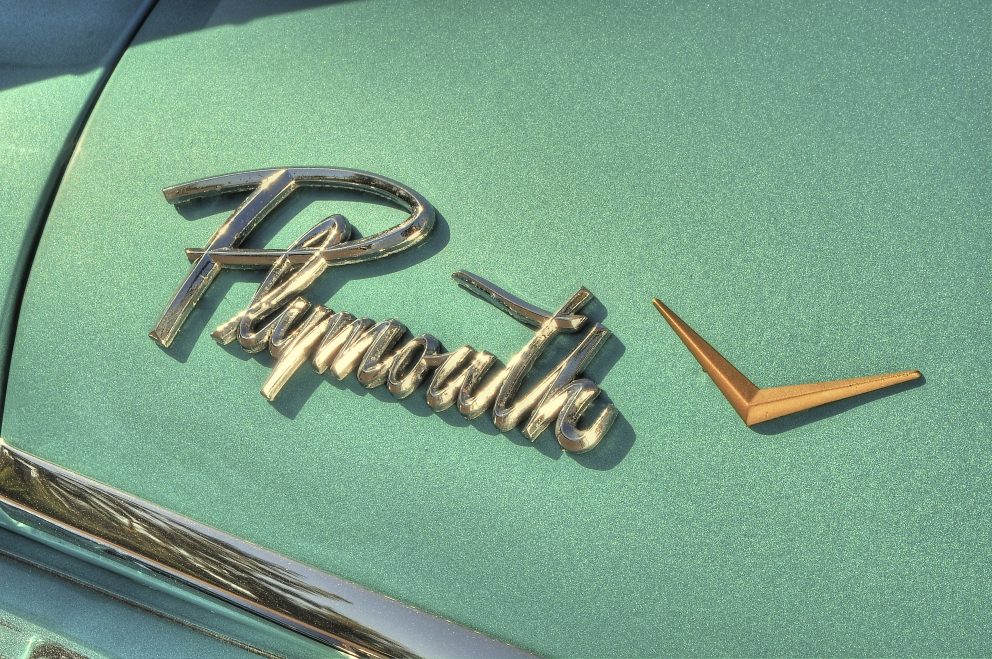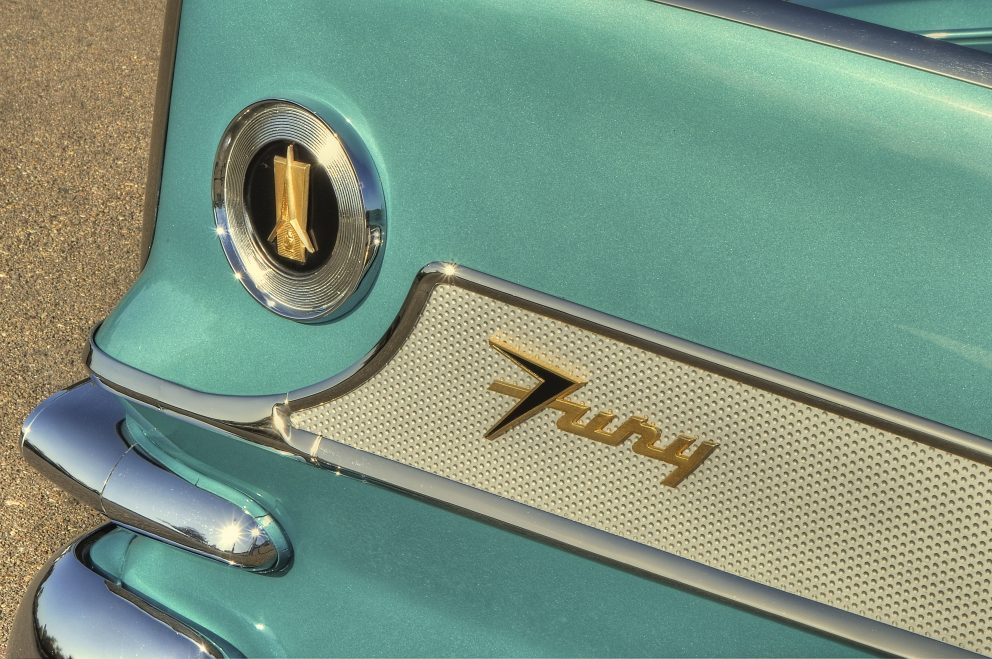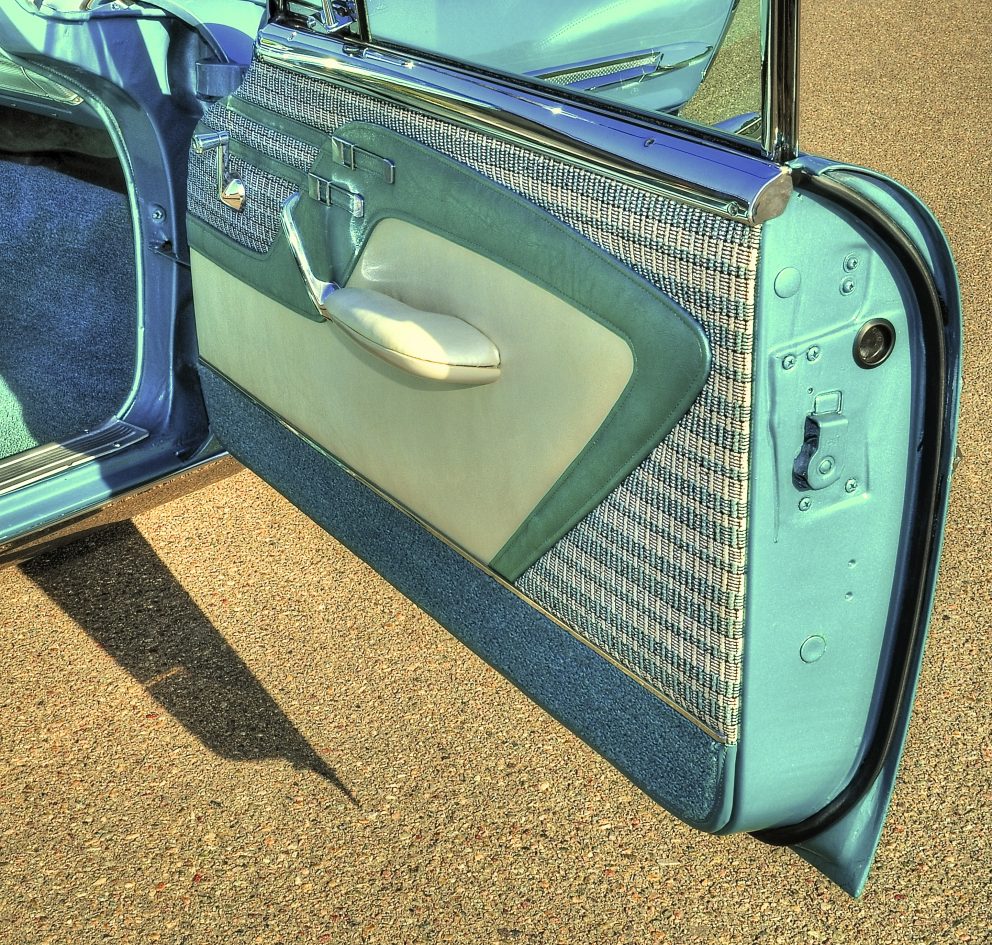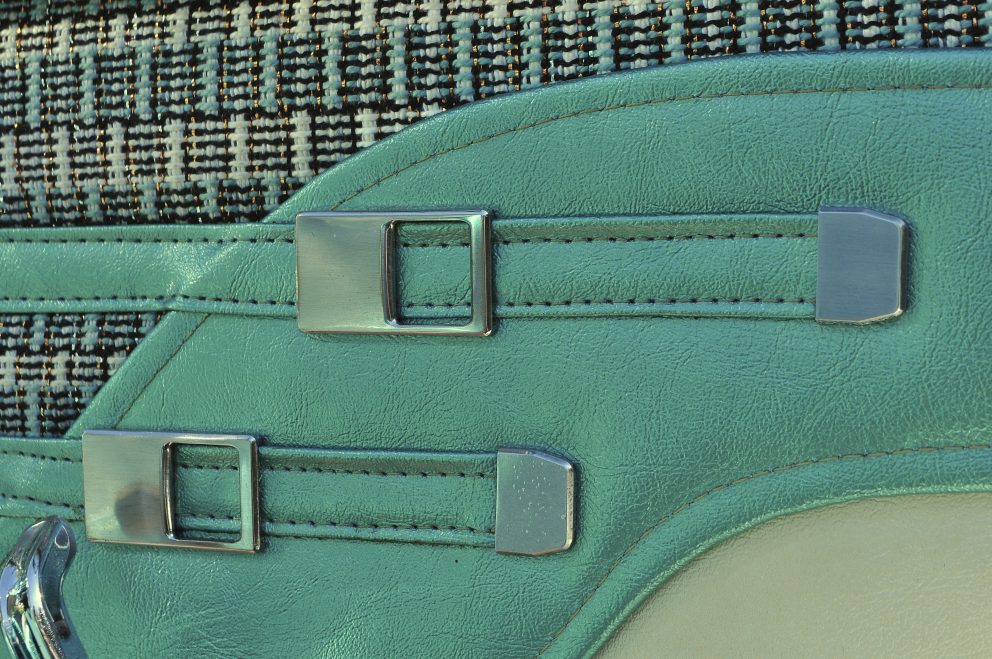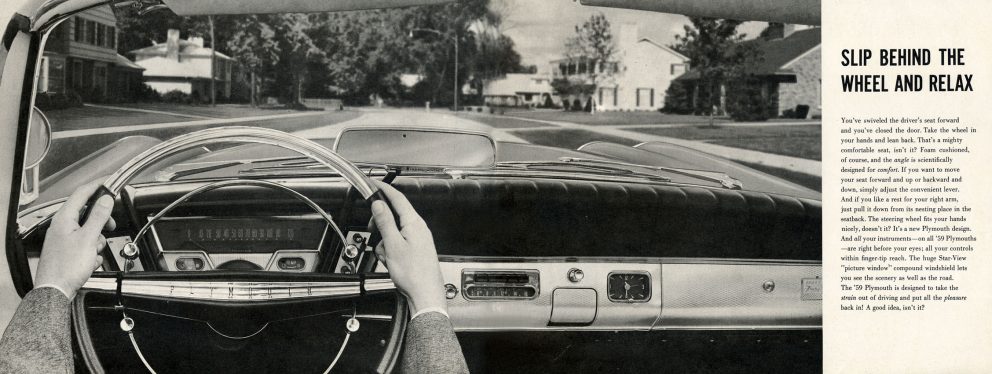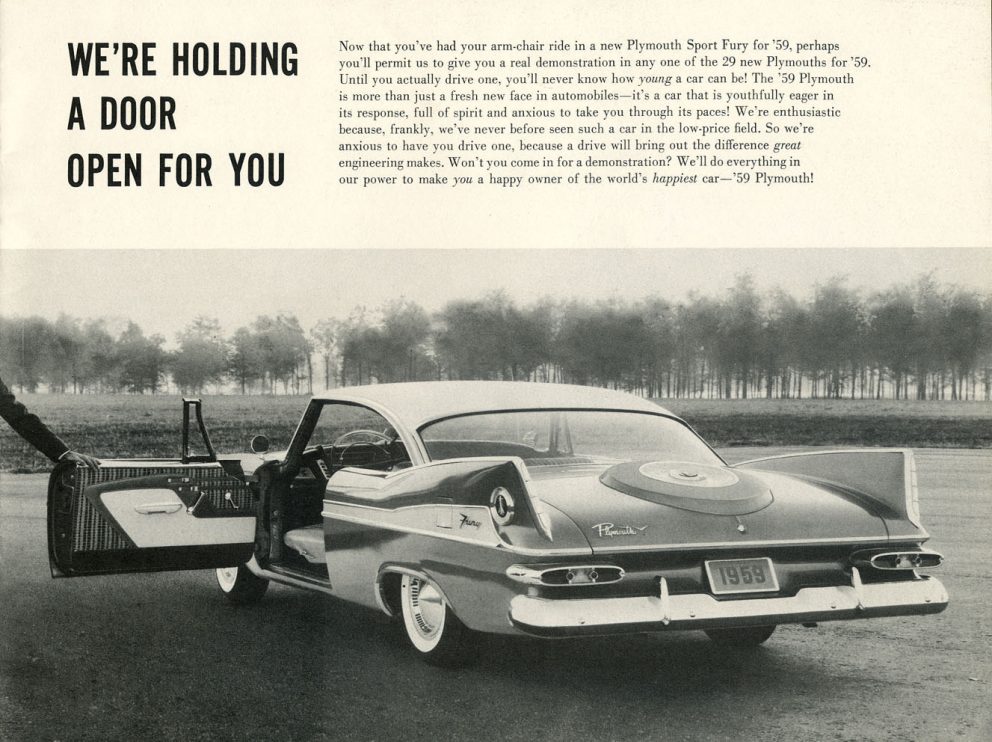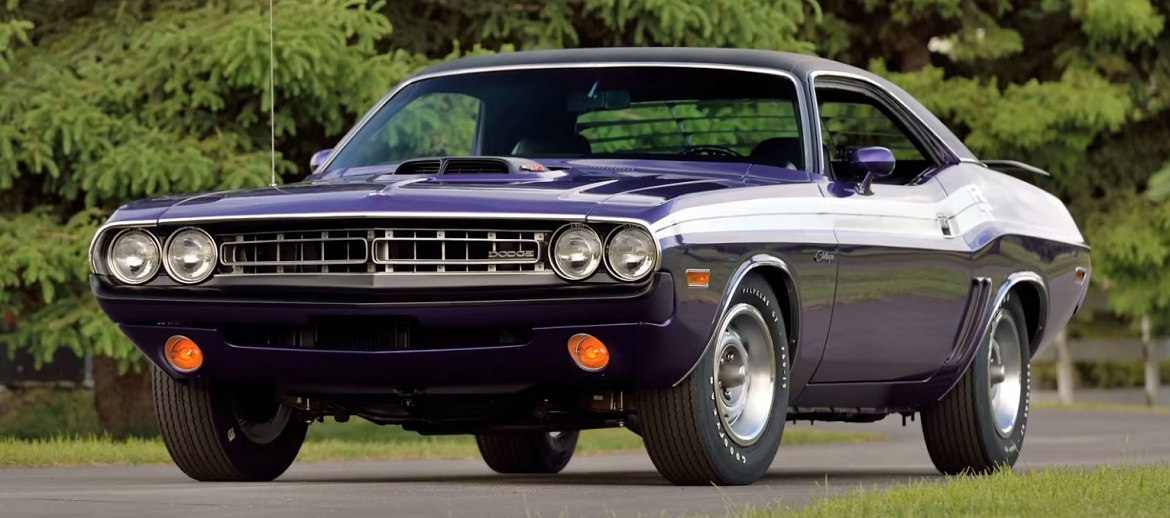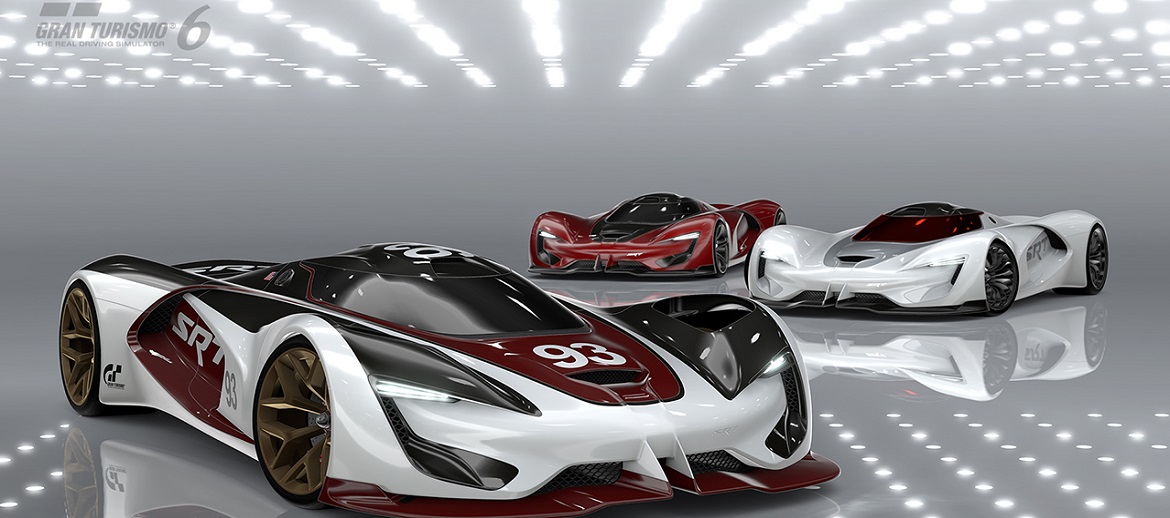Sport Fury!
2 years ago Heritage
— FIRST YEAR OF SPORT FURY MODEL
— FACE-LIFTED VIRGIL EXNER STYLING
— SWIVEL-ACTION SEATS STANDARD
1959 TOP-OF-THE-LINE PLYMOUTH
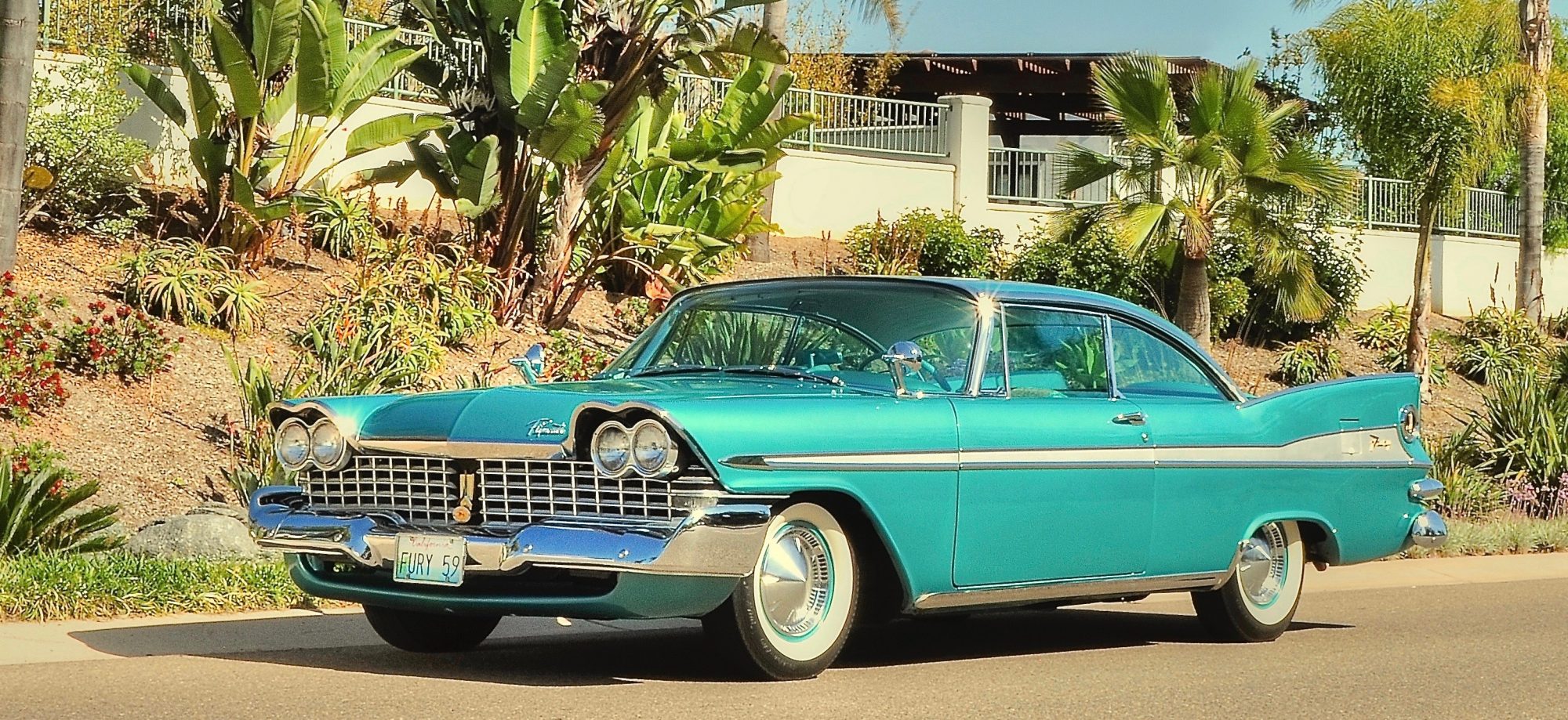
The “Forward Look” body for Plymouth in 1959 had been restyled in a rather flamboyant fashion, and the front end of the car was bold and featured a lattice-work grille that was full-width, quad headlights and a large bumper with a lower valance panel that had the look of a scooped jet intake. On the rear, the “stabilizing” fins were modified from the previous years with a new longer, sweeping size and thinner shape, slightly canted outward. The taillights were moved down and used built-in back-up lights, cleaning up the rear and providing a look of width and lowness.
Car Life Magazine also tested a ’59 Sport Fury in their July 1959 issue (equipped with the Golden Commando 395 engine) and they took it for a 3,000-mile drive up and down the east coast. They were most impressed with the suspension: “This Sport Fury’s ride is top-notch all the way. The car corners at all speeds with a minimum of body lean or tire squeal. At higher speeds, its ‘beefed up’ suspension allows it to track curves without plowing or drifting. Even when taking you over large bumps, the car refuses to bounce or toss. Smaller bumps are just about completely soaked up by the suspension.”
And during the testing period, the editors weren’t afraid to do some WOT (wide-open-throttle) action with the finned Mayflower. “The passing prowess of this automobile was a constant source of joy in the both of us. When you’re behind the wheel of the Sport Fury, you never feel the need for creeping up close to a car to be passed, so as to get by it at the first available opportunity. A flick of the right foot on the accelerator, at any speed below 75 miles per hour, results in instantaneous downshift into the intermediate of the transmission’s three gears. A slight turn to the left on the steering wheel, and you’re almost immediately past the car that had been leading you.”
Immense tail fins are the first things that greet the eyes when viewing the ’59 Plymouth Sport Fury from the rear. This car features Metallic Emerald Green as the paint choice, and when it’s out in the California sunshine, the hue really comes alive!
TOUCH OF A FINGER ACTIVATES THE SEATS
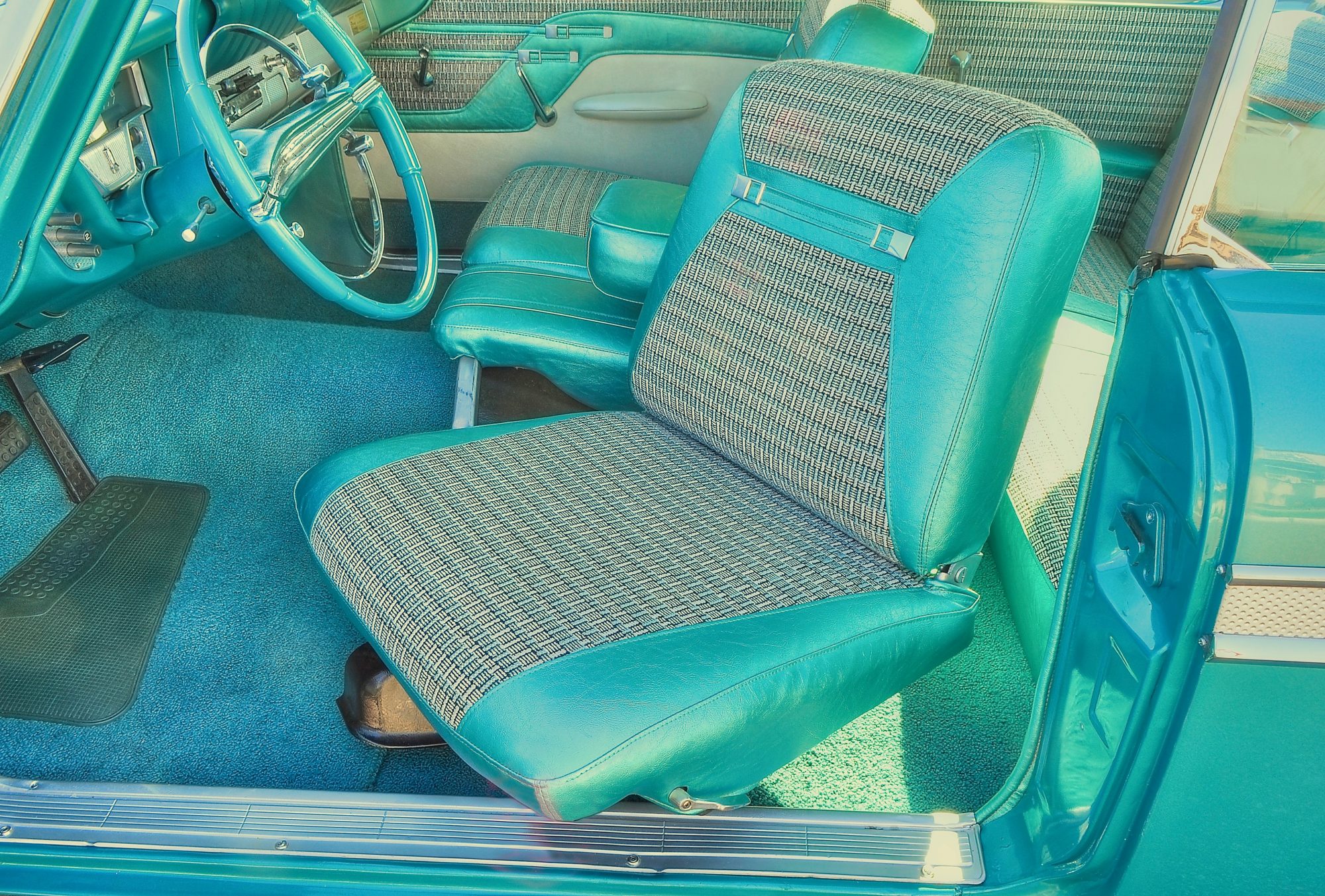
Swivel front seats were standard equipment on Sport Fury models, designed to make entering and exiting the interior easier. They operate via a lever on the side and swing out to a 40-degree arc. Part of the package includes a center-mounted armrest that swings up in case of three riding in the front seating area. Pure Nirvana for lovers of the 1950s!
DECORATIVE SPORT DECK SPARE TIRE COVER
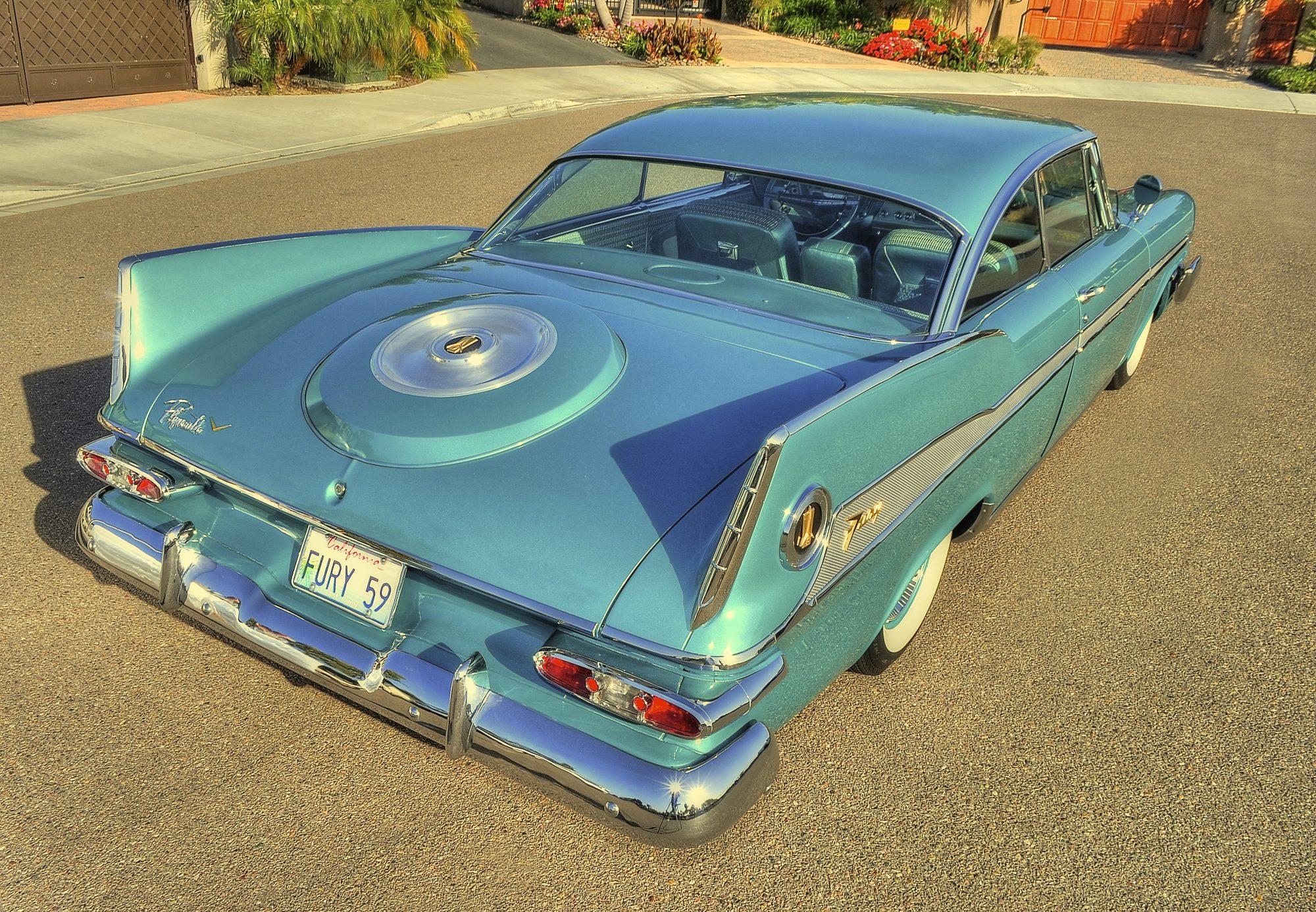
Standard on Sport Fury and optional on other V8 models, it was a “retro” styling touch meant to provide a luxurious appearance.
395 FOOT-POUNDS TORQUE RATING
The Golden Commando 395 engine was 361 cubic inches and developed 305 horsepower. A single Carter four-barrel was used and the ignition system consisted of a double-breaker distributor. These engines were factory painted in a red hue with gold-colored valve covers and air filter housing. A generator was still being used (alternators didn’t appear until the 1960 model year for Mopar vehicles).
The “395” in the name of the engine refers to the torque rating, as it produced 395 ft.-lbs. of torque (at 3,000 rpm). The 361 was a new version of the “B” engine for 1959, being an outgrowth of the former 350-cid engine thanks to a larger bore (from 4.06 to 4.12 inches).
FLOATING HEADLIGHTS
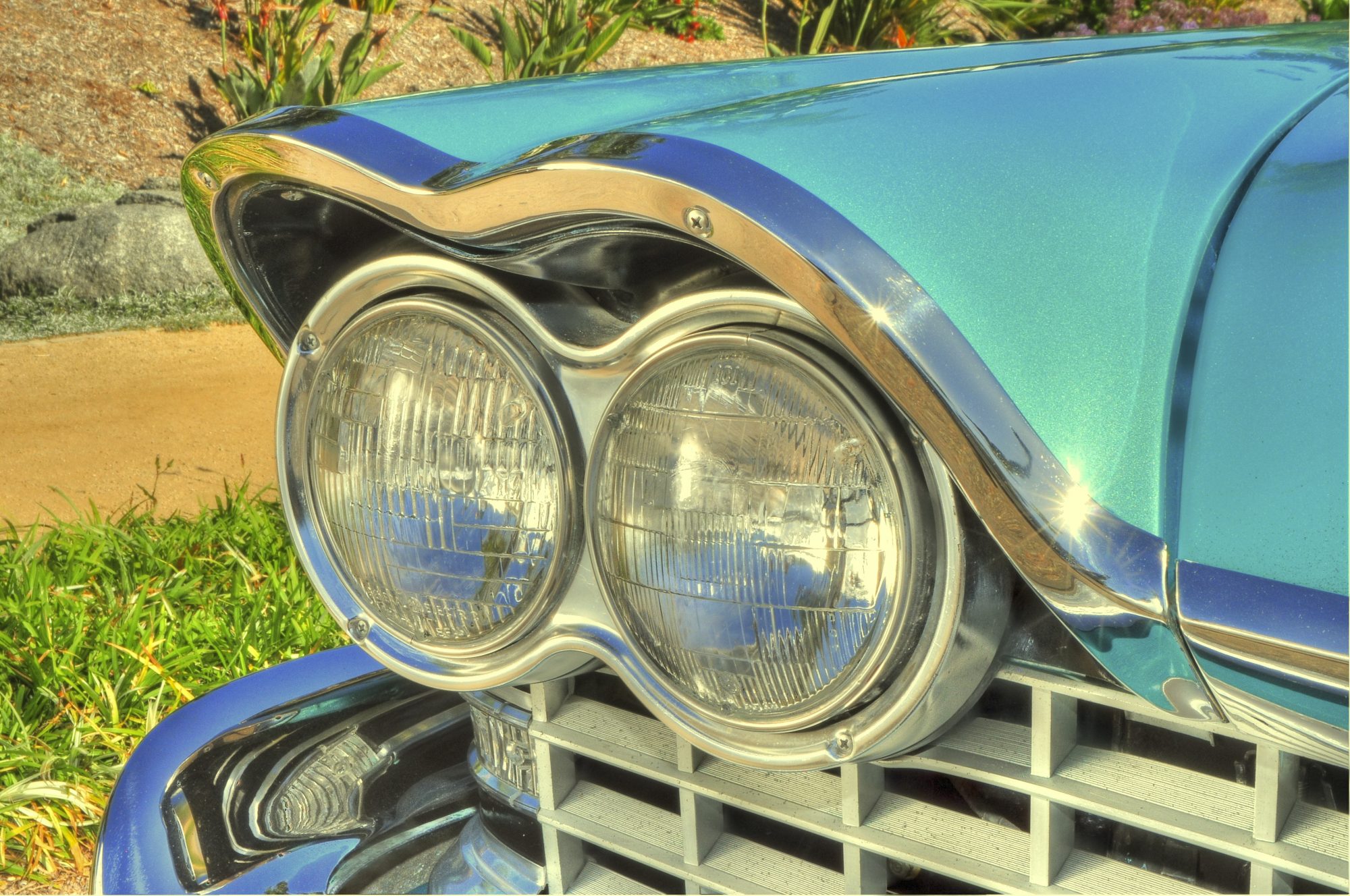
Quad 5.75-inch “floating” headlights were used on ’59 Plymouth models, a carryover from the year prior where they debuted.
DISTINCTIVE ORNAMENTATION
Sport Fury models came equipped with the “V” emblem on the decklid to signify the V8 engine that came as standard equipment. This particular car has the optional Golden Commando engine; however, all V8-equipped ’59 Plymouths came with a V emblem.
Side trim on Sport Fury models included sportone textured anodized aluminum trim, only the “Fury” name was used in gold on these cars even though it was the higher-priced “Sport Fury” model. Round medallions were added, giving the car a distinctive look.
PUSH A BUTTON AND GO!
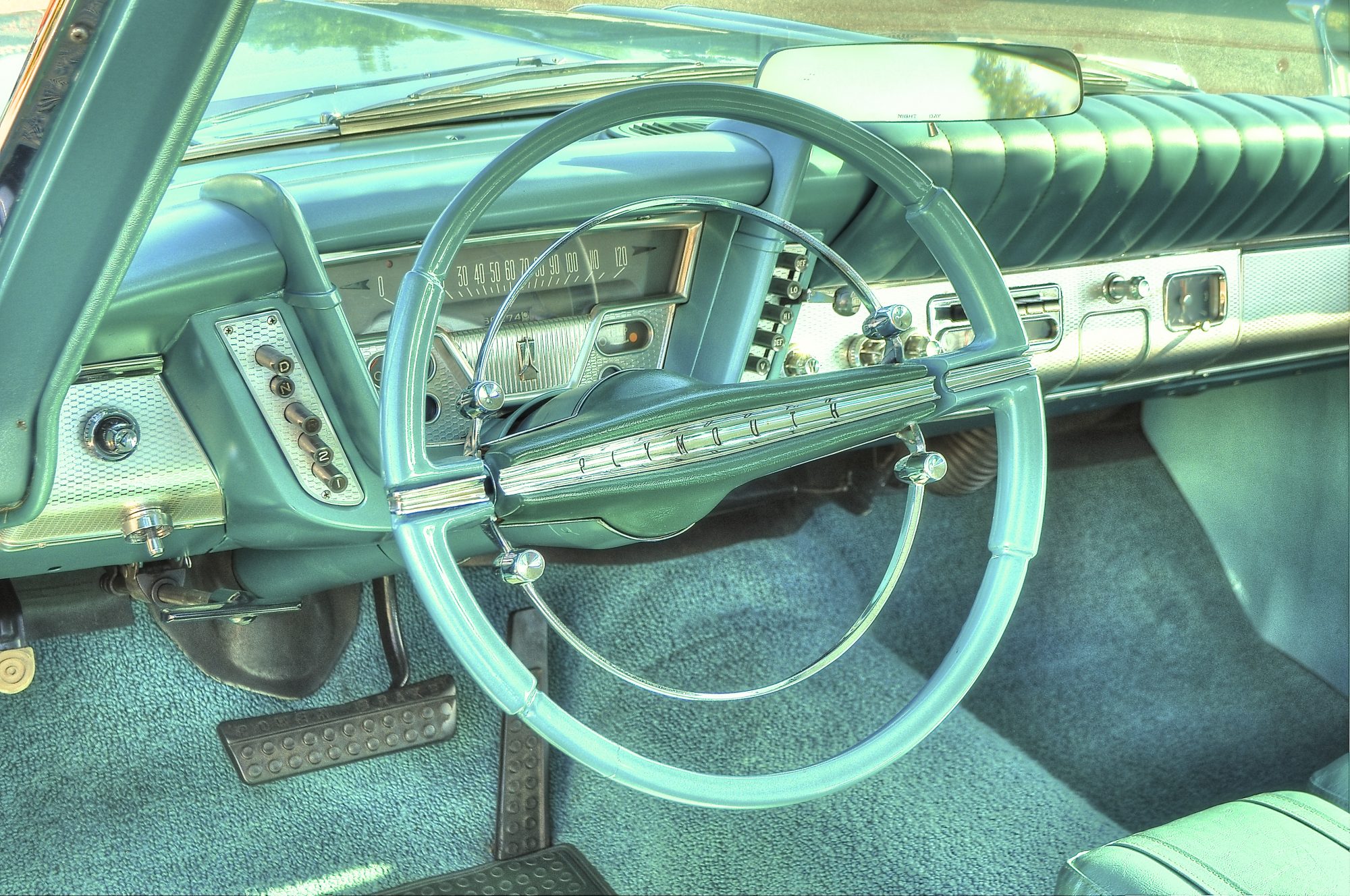
“Jet-Age Control Center” instrument cluster included 5 attractively grouped buttons on the left-hand side to shift the TorqueFlite® automatic transmission, 5 buttons on the right-hand side for the heater/defroster system. Some called these the “typewriter transmission” buttons, and Chrysler Corporation loved the push buttons for their automatic transmissions in this era. By 1965, they were gone due to a new federal law to a “universal” way of shifting an automatic transmission for the industry, the traditional column shifter or floor shifter.
DOOR DETAILS
New for 1959 came chrome plating on the upper doors and the upholstery treatment on the doors of the Sport Fury models was highly detailed, providing a flashy appearance unique to the top-of-the-line cars.
GLITZY FRONT END
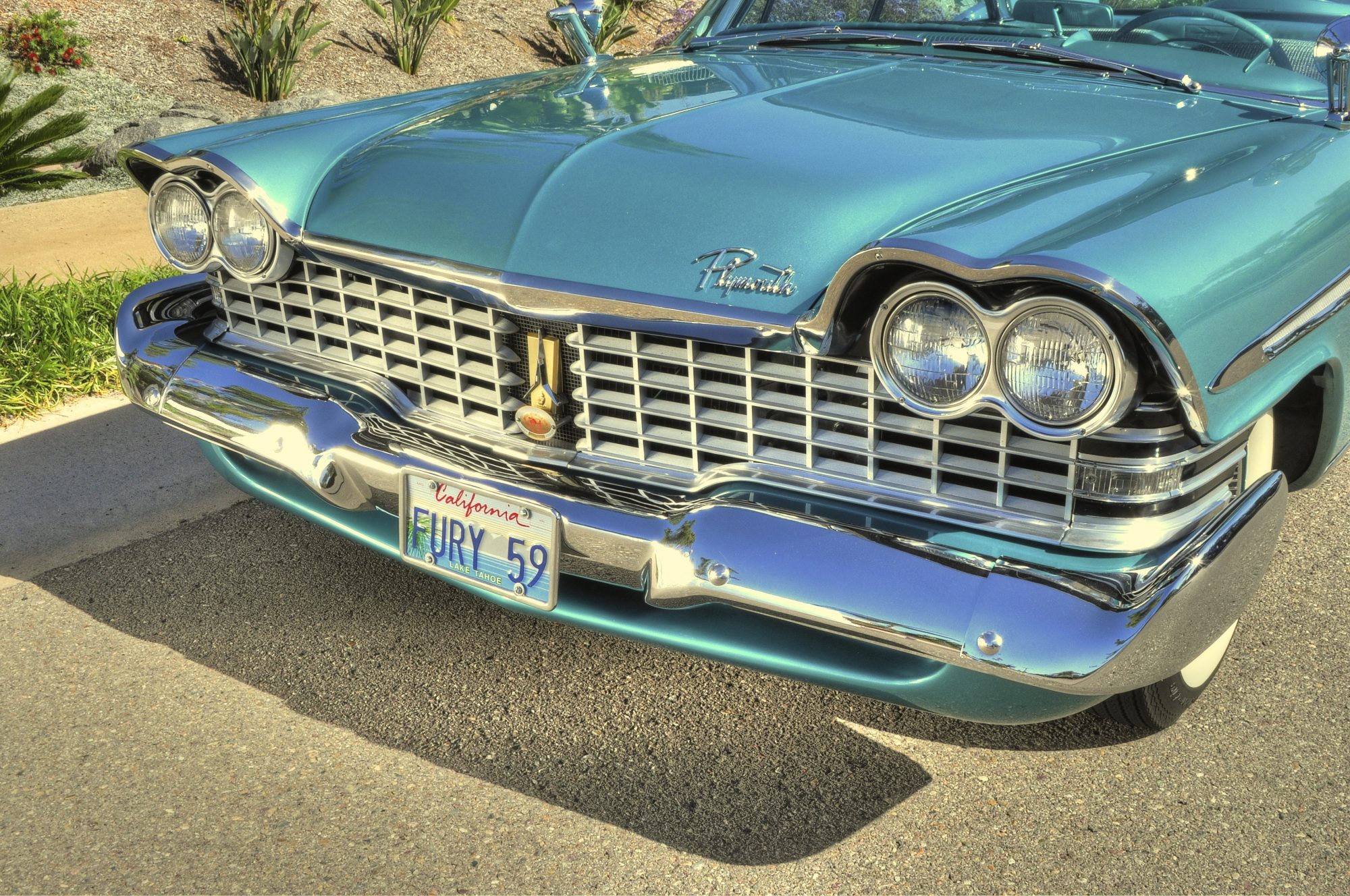
The double headlights were covered with “eyebrows” and the top of the fenders featured a shape that is reminiscent of a double-barrel shotgun, a clever styling trick to give the front of the vehicle an interesting and unique shape to update it from the 1957-58 models. Full-width aluminum egg-crate grille was all-new and the hood received a center wind-split to change it up from the previous year as well.
FULL WHEEL COVERS
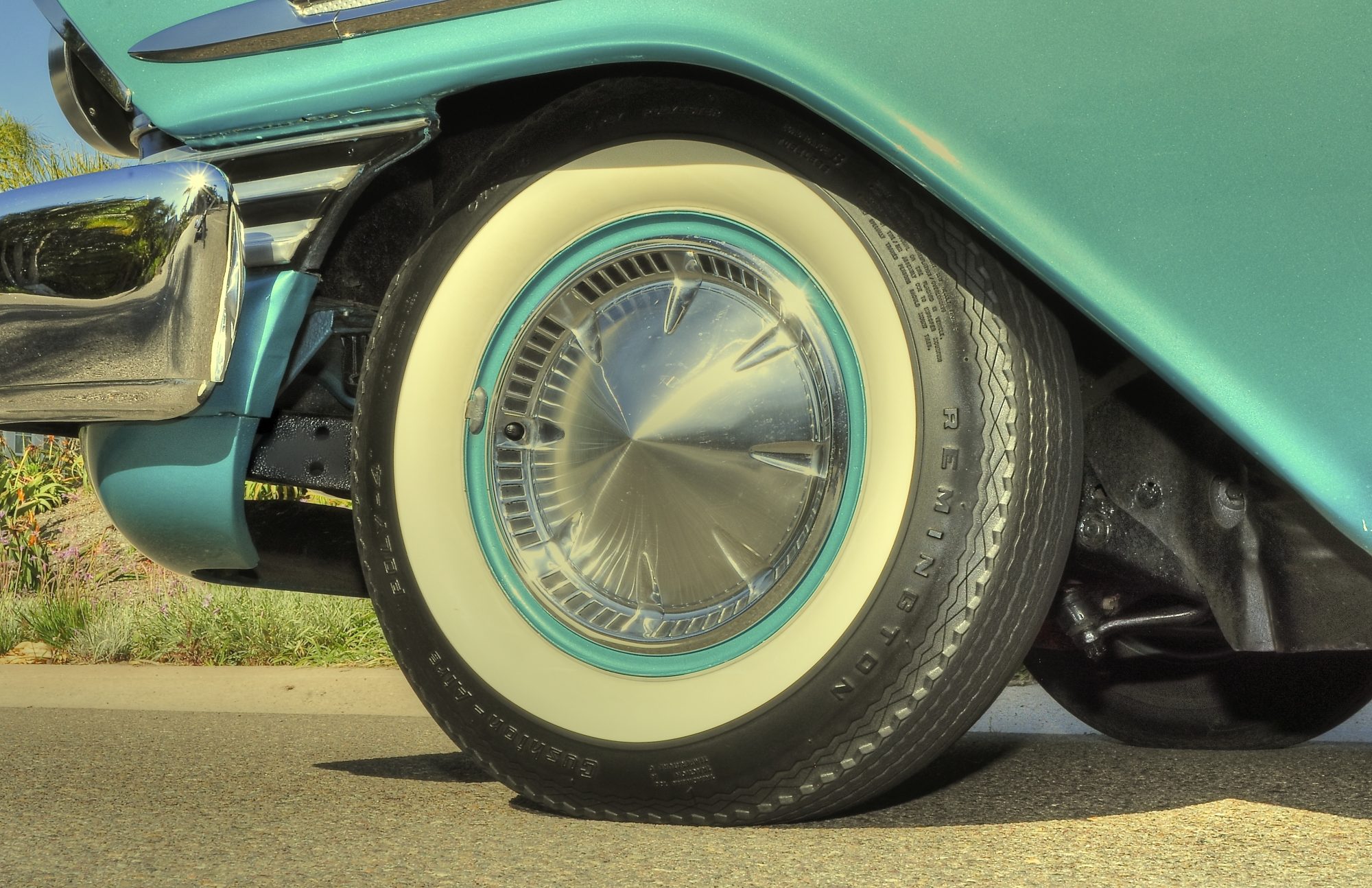
Remington Cushion-Aire 4 Ply Polyester tubeless tires sized G78-14 with wide whites were the chosen tire for the restoration, replicating the original 7.50 x 14 units. Wheels were sized 5 x 14 inches and the full wheel covers were standard on Sport Fury models.
LAST YEAR OF FULL FRAME
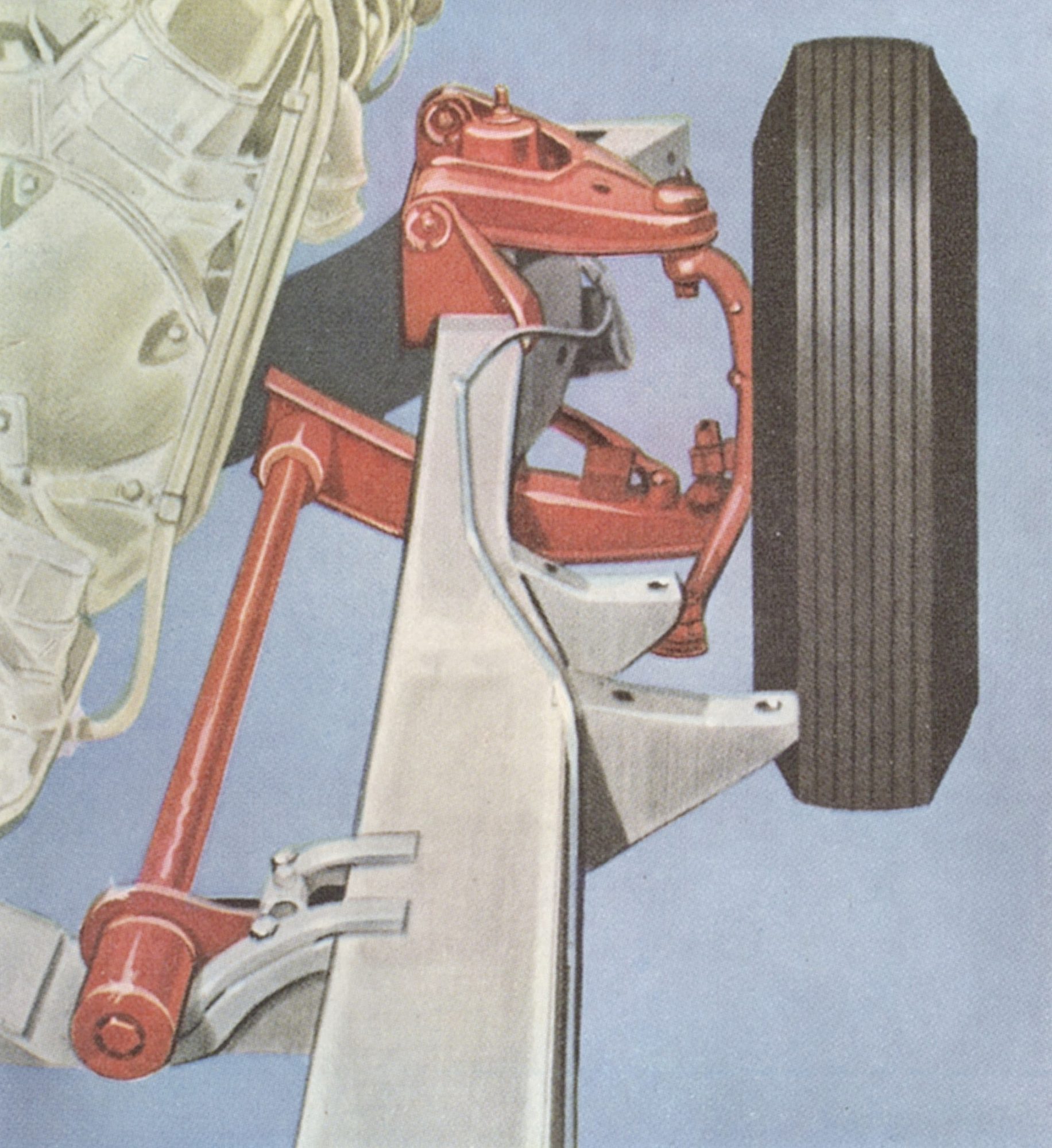
Front “Torsion-Aire” suspension consisted of adjustable torsion bars and ball joints, with “dip-control” upper control arms, “wide-angle” strut-supported lower control arms and Oriflow shock absorbers.
CLASSIC LITERATURE
Collecting original dealer brochures is part of the fun when owning/restoring classic Chrysler Corporation vehicles!
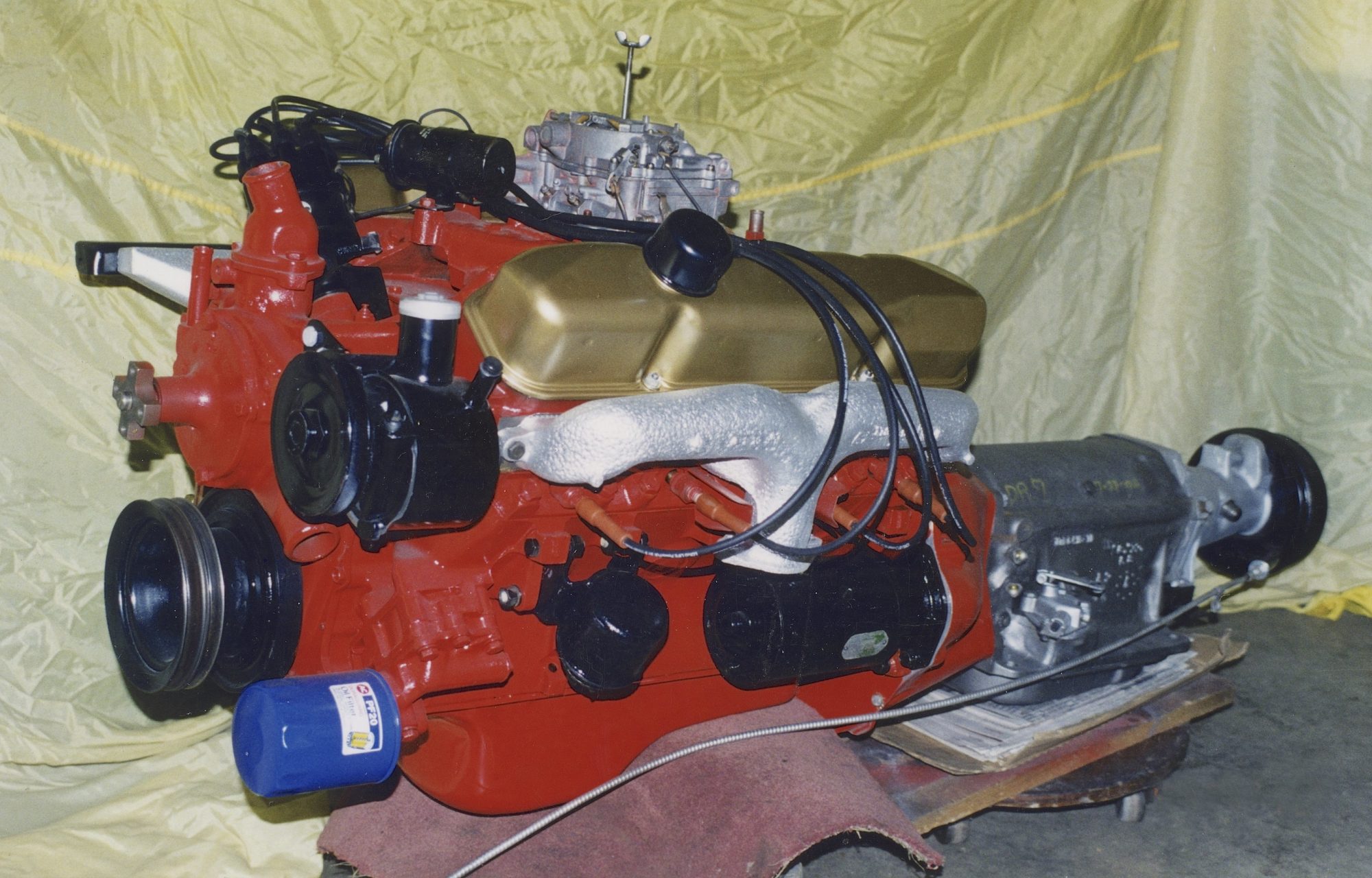
The 361-cid V8 engine was fully rebuilt and detailed as per 1959 color specs, as was the TorqueFlite 3-speed automatic transmission (cast iron case early version).
Here’s a look at the original television commercial for the all-new 1959 Sport Fury:
Author: James Maxwell
